Children learn about science concepts through the exploration of both their indoor and outdoor environment. They use all of their five senses to take in new information and actively learn about their world.
As newborns, children use observation to make sense of their surroundings. They track objects with their eyes, enjoy looking at faces, and notice high-contrast patterns. When they begin to grasp objects, children explore object properties. They may mouth, shake, drop, bang, or manipulate the objects in order to learn about them.
They soon discover that they enjoy an action they have performed upon the object and take great delight in repeating it over and over. For example, they drop objects onto the ground and hear a loud bang. They repeat this to continue hearing the banging noise. In this example, children are learning about cause and effect and trial and error.
By 24 months, children are active scientists, trying to discover as many new things as possible. They are interested and curious about living things, and begin to ask simple questions about nature. They enjoy spending time outside, and pick up objects to observe, such as leaves, pebbles, or flowers. They are also capable of identifying characteristics of living things they are familiar with. For example, they may share that their cat “meows.” Children are also engaging in the beginning processes of classification as they can identify similar properties among objects and people. Children begin to apply past experiences to new ones, and begin to predict outcomes of certain actions.
The great outdoors!
Children learn through all of their senses, and what better place to engage all of those senses than the outdoors. There are many opportunities for children to see different animals, colors, and people. Children can experience different textures as they explore puddles, dried leaves, and flowers. They can feel raindrops and wind, and hear cars and trucks. These early experiences provide children with exciting and meaningful ways to learn about nature, science, and the community they live in. The outdoors is also a place where children are able to practice and master physical skills such as walking, running, jumping, and climbing. They experiment with throwing objects, such as a ball, and moving their bodies in different ways, such as spinning while they chase bubbles. Outdoor experiences provide children with positive outlets to expend energy, get messy, and learn about the world around them.
Birth to 9 months
Children use social interactions along with their five senses to discover and explore the world around them.
Indicators for children include:
- Observes people and objects in his or her environment
- Engages in social interactions with familiar adults
- Actively explores new objects found in the environment, e.g., mouths, pats, grasps
- Uses all of his or her senses to explore and discover new things, e.g., reaches out to touch rain or snow
Strategies for interaction
- Create an inviting environment for the child to explore; change materials and toys in the child’s environment on a regular basis
- Follow the child’s lead during play
- Provide toys and experiences that have a variety of colors, textures, sounds, and smells
- Allow the child to explore his or her outdoor environment, e.g., go on stroller walks, have the child crawl on grass
7 months to 18 months
Children use all of their five senses to purposefully collect and act on information received through interactions with their environment.
Indicators for children include:
- Actively explores objects and experiences their properties through the different senses, e.g., color, texture, weight, taste
- Repeats actions that attracts his or her attention, e.g., drops object onto floor to hear the sound it makes
- Experiments with different textures found in the outside environment, e.g., runs fingers through dirt, crumbles dry leaves
Strategies for interaction
- Provide opportunities for the child to explore and play outside
- Engage in conversations with the child about nature, animals, and other living things; introduce books that cover those topics
- Provide the child plenty of opportunities for sensory play, e.g., pudding, shaving cream, water, sand
16 months to 24 months
Children begin to use experimentation to interact and engage with their environment in different ways. In addition, a new, distinct interest in living things emerges.
Indicators for children include:
- Shows interest in own body; may know names for certain body parts
- Begins simple categorizing, e.g., cats and dogs are animals
- Asks simple questions about nature
- Attempts new tasks during familiar activities, e.g., plays at the water table, and instead of using hands, tries to use head to make the water move
- Uses motion and sound to represent an observation, e.g., “snake, ssssss!”
Strategies for interaction
- Provide opportunities for the child to engage in sensory play
- Talk to the child about different animals, their size, where they live, and what sounds they make
- Allow the child to explore flowers, insects, and other living things while outside
21 months to 36 months
Children use their communication skills to indicate interests in observations, experiences, and engagement with the world around them. Children actively experiment with their environment to make new discoveries happen.
Indicators for children include:
- Begins to identify characteristics of animals, e.g., “The dog barks”
- Identifies various attributes of objects, food, and materials, e.g., color, shapes, size
- Draws on past experience to describe and communicate about observations and experiences, e.g., knows what happens when one blows on a candle, discusses what happens to snow when the temperature is warmer
- Engages in processes to reach an outcome, e.g., mixes three different colors of paint to see what color emerges
Strategies for interaction
- Begin to ask the child “w” questions: what, where, when, and why
- Incorporate science and inquiry questions in the child’s daily routine
- Provide activities and experiences that allow the child to problem-solve and reach conclusions, e.g., building, experimenting with changes from solids to liquids
- Create themes and activities that focus on nature, e.g., share with the child the life cycle of a butterfly through both books and real-life experiences
Discover how Science Concepts & Exploration is related to:
- Self-Regulation: Foundation of Development
Attention Regulation - Developmental Domain 2: Physical Development & Health
Gross Motor - Developmental Domain 2: Physical Development & Health
Perceptual - Approaches to Learning
Curiosity & Initiative - Approaches to Learning
Problem Solving


 Printer-friendly PDF
Printer-friendly PDF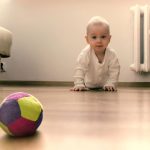
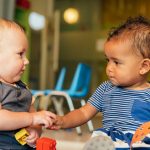
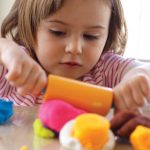
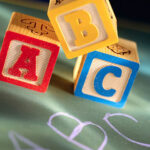
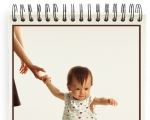
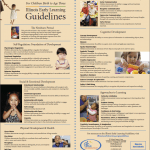
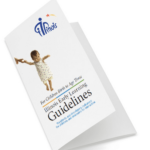

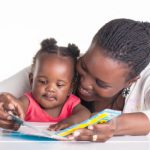
 PDF para imprimir
PDF para imprimir